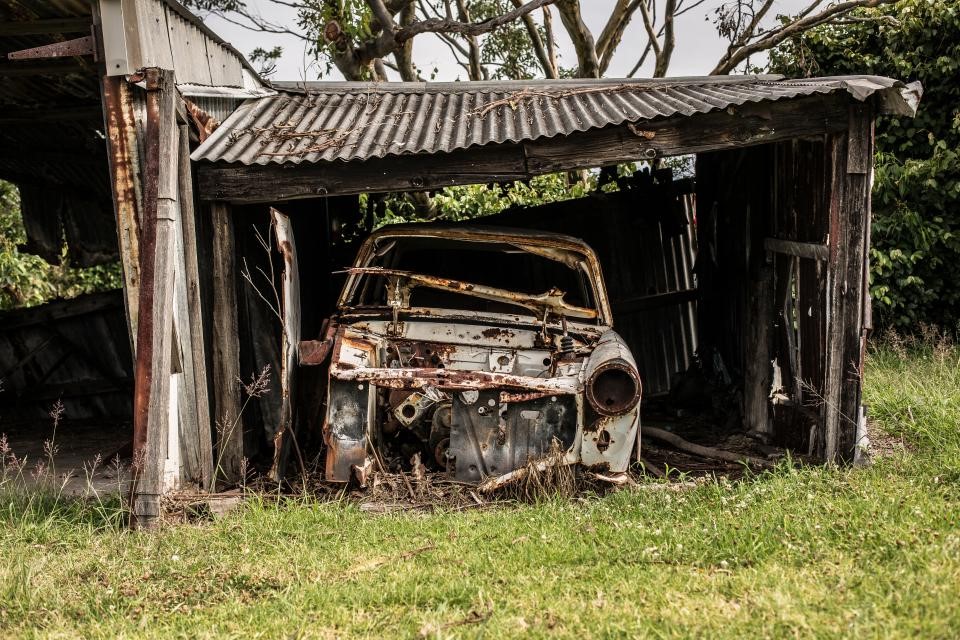 If you are at school or work and notice several people who are soaking wet and wearing rain jackets, you would not have to be a detective or even a good lawyer to confidently make the judgment that it’s raining outside. Similarly, the legal concept of summary judgment used by courts is when the undisputed facts surrounding a claim lead to a court concluding the lawsuit as a matter of law, not facts. When that concept is applied to only certain elements or portions of a case or claim, it is called partial summary judgment. Partial summary judgment and its effects were of primary importance for a Baton Rouge, Louisiana, woman’s case.
If you are at school or work and notice several people who are soaking wet and wearing rain jackets, you would not have to be a detective or even a good lawyer to confidently make the judgment that it’s raining outside. Similarly, the legal concept of summary judgment used by courts is when the undisputed facts surrounding a claim lead to a court concluding the lawsuit as a matter of law, not facts. When that concept is applied to only certain elements or portions of a case or claim, it is called partial summary judgment. Partial summary judgment and its effects were of primary importance for a Baton Rouge, Louisiana, woman’s case.
Jennifer R. Hayes was carefully driving westbound along Louisiana Highway 724 on a rainy day with her friend Mayola Casais (owner of the car) and Casais’ foster child Geneva Marie Fils in 2006. Out of nowhere an eastbound truck veered into her lane and hit head-on. As a result of the collision, Geneva sustained a fractured skull, an intracerebral hematoma, and a traumatic brain injury.
Geneva’s biological parents, John and Demitria Fils, filed a lawsuit against multiple parties when they found out about the accident. One of those parties included the Louisiana Department of Children and Family Services, which the Fils claimed should be liable because Geneva was under the custody and control of a foster parent which the Department assigned. The Fils sought monetary damages for Geneva’s injuries as well as loss of consortium, which is compensation for their familial loss for what Geneva’s injuries did to their health or family relationships. In 2011, Demitria Fils passed away and Geneva’s biological maternal aunt, Calvemia Reed replaced her in the lawsuit.
 Louisiana Personal Injury Lawyer Blog
Louisiana Personal Injury Lawyer Blog


 Having the town pave your road or conduct other maintenance may seem like a harmless occurrence. However, it can have a significant impact on determining whether your property can become public use.
Having the town pave your road or conduct other maintenance may seem like a harmless occurrence. However, it can have a significant impact on determining whether your property can become public use.  Waiting until the last minute to do almost anything is not recommended but it is especially true if you are seeking to bring a claim for damages. That is what some fishermen found out when they sought to bring claims under the Oil Pollution Act of 1990 (OPA) for damages that resulted from an oil spill. The oil spill came from a barge owned by American Commercial Airlines, LLC (ACL) that had been involved in a collision on the Mississippi River in the Port of New Orleans on July 23, 2008.
Waiting until the last minute to do almost anything is not recommended but it is especially true if you are seeking to bring a claim for damages. That is what some fishermen found out when they sought to bring claims under the Oil Pollution Act of 1990 (OPA) for damages that resulted from an oil spill. The oil spill came from a barge owned by American Commercial Airlines, LLC (ACL) that had been involved in a collision on the Mississippi River in the Port of New Orleans on July 23, 2008.  Double jeopardy is not a television marathon featuring Alex Trebek, but protection against it is fundamental to the United States legal system. In the criminal justice system, double jeopardy means being put on trial for the same charge twice; the Fifth Amendment to the United States Constitution bans it.
Double jeopardy is not a television marathon featuring Alex Trebek, but protection against it is fundamental to the United States legal system. In the criminal justice system, double jeopardy means being put on trial for the same charge twice; the Fifth Amendment to the United States Constitution bans it.  Life deals some people a tough hand. For Geneva Fils, a Louisiana infant in the foster care system, a car crash and severe injuries followed by a lengthy lawsuit added to her list of problems.
Life deals some people a tough hand. For Geneva Fils, a Louisiana infant in the foster care system, a car crash and severe injuries followed by a lengthy lawsuit added to her list of problems.  One bad decision can lead to a huge legal headache. The combination of a chaotic atmosphere and alcohol makes bars the perfect storm for mistakes that can later lead to huge liability. In a recent case, a man who punched another patron at a Tangipahoa Parish bar appealed a default judgment that awarded the victim over $100,000 dollars for personal injury damages and medical expenses.
One bad decision can lead to a huge legal headache. The combination of a chaotic atmosphere and alcohol makes bars the perfect storm for mistakes that can later lead to huge liability. In a recent case, a man who punched another patron at a Tangipahoa Parish bar appealed a default judgment that awarded the victim over $100,000 dollars for personal injury damages and medical expenses. Determining liability when someone is injured on someone else’s property is a complex endeavor. One of the major factors is determining whether the injury resulted from an unreasonably dangerous condition.
Determining liability when someone is injured on someone else’s property is a complex endeavor. One of the major factors is determining whether the injury resulted from an unreasonably dangerous condition.  When an employee is in an accident while driving the company’s car, is the company’s insurer liable? Generally, an employer is liable for employee accidents when driving a company car for employment duties. This can be difficult to determine in situations such as when an employee is on call and operating a company car, when the employee drives the company car at night, or when the employee drives the car on a personal errand with passengers. An accident involving St. Tammany Parish helped shed light on these issues.
When an employee is in an accident while driving the company’s car, is the company’s insurer liable? Generally, an employer is liable for employee accidents when driving a company car for employment duties. This can be difficult to determine in situations such as when an employee is on call and operating a company car, when the employee drives the company car at night, or when the employee drives the car on a personal errand with passengers. An accident involving St. Tammany Parish helped shed light on these issues.  Generally, individuals expect that when on the premises of a public entity, the land has been safely maintained and there is a low risk of becoming injured. If an individual did become injured, he or she would expect to be reasonably compensated for any injuries. However, in Louisiana, premises liability law differs from the law that is applied when suing a private landowner. As this case shows, establishing that a defect causes an unreasonable risk of harm is a difficult obstacle to overcome when suing a public entity and can leave injured parties with no compensation for their injuries.
Generally, individuals expect that when on the premises of a public entity, the land has been safely maintained and there is a low risk of becoming injured. If an individual did become injured, he or she would expect to be reasonably compensated for any injuries. However, in Louisiana, premises liability law differs from the law that is applied when suing a private landowner. As this case shows, establishing that a defect causes an unreasonable risk of harm is a difficult obstacle to overcome when suing a public entity and can leave injured parties with no compensation for their injuries. While many steps may be taken to prevent accidents, most are, unfortunately, unpredictable. For many people, automobile insurance is the silver lining to unforeseeable car accidents. However, the type of insurance policy you have can determine how much of the accident is covered, if it is covered at all, so it is important to understand exactly what you sign up for and always double check for changes. This issue was explored in a case brought to the Twenty-Fourth Judicial District Court for the Parish of Jefferson.
While many steps may be taken to prevent accidents, most are, unfortunately, unpredictable. For many people, automobile insurance is the silver lining to unforeseeable car accidents. However, the type of insurance policy you have can determine how much of the accident is covered, if it is covered at all, so it is important to understand exactly what you sign up for and always double check for changes. This issue was explored in a case brought to the Twenty-Fourth Judicial District Court for the Parish of Jefferson.